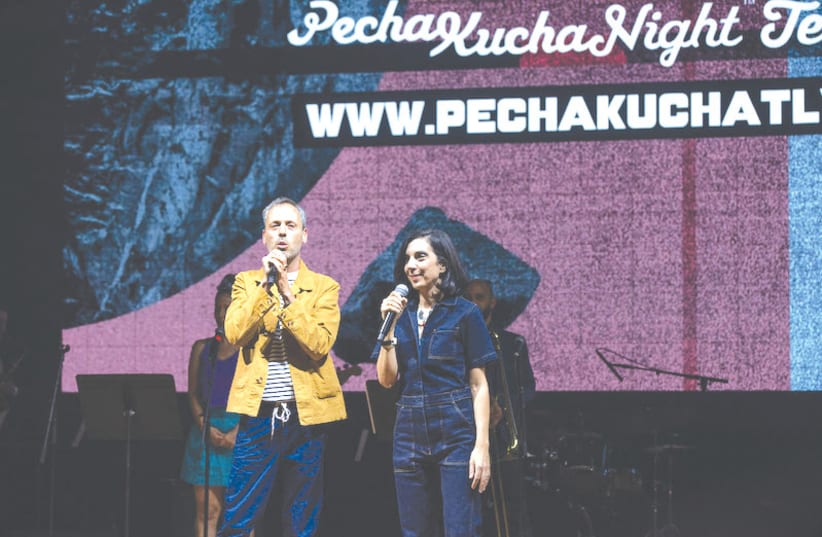If you could capture the Israeli cultural scene in exactly 200 images, what would that look like? Alternately, if that scene could be described in just over one hour, what would it sound like? For the past 16 years, since Anat Safran returned from Japan with a brand-new format in mind, the annual Pecha Kucha event has presented a very specific, incredibly precise snapshot of the most up-to-date local cultural tableau.
Pecha Kucha – “the sound of conversation” in Japanese – is a format dreamed up by Tokyo-based architects Astrid Klein and Mark Dytham. The two developed the structure as a tool to help students whittle down their PowerPoint presentations to the essence.
In 2003, they presented the first Pecha Kucha evening at Tokyo’s Roppongi. Each artist was invited to present exactly 20 images, each of which was projected for exactly 20 seconds. The result was an array of fine-tuned, six-minute-and-forty-second-long presentations.
When Pecha Kucha comes to Tel Aviv
In 2007, Safran imported the format to Tel Aviv, enlisting curator and cultural entrepreneur Itay Mautner as co-artistic director. Over the years, the Tel Aviv edition of Pecha Kucha has become the largest internationally and has hosted an assortment of artists from a wide range of fields.
“This year there are 10 artists, not nine, because we couldn’t choose.”
Itay Mautner
“This year there are 10 artists, not nine, because we couldn’t choose,” explained Mautner by phone. The four Pecha Kucha events sold out before the lineup had even been announced, evidence of the faith audience members place in Safran and Mautner’s taste.
“The trust is very special. The audience gets filled with inspiration and desire to create and the feeling that all of this is happening in our country. It’s wonderful.”
This year’s lineup consists of performance artist Meital Raz, the Chill Phill Orchestra, musician Ben Aylon, film director Barak Heymann, multi-disciplinary installation artist Liat Danieli, filmmakers Ada Rimon and Ofeq Shemer, sound and light ensemble Milchamami, creative director Adi Fleisher, artist and food-waste activist Nitsan Mayost, and illustrator Ron Levin.
The selection was made with a few factors in mind. “Each one of us, Anat and myself, in the other things we do, meets a lot of artists in all different places and ways. We get to know them. And then we start to think about who can be good for the Pecha Kucha,” Mautner said.
“Very few people approach us. Mostly we approach people whom we think are good and interesting. The first thing we think of is visual because it’s a visual platform. We think about the balance, that we won’t have three graphic designers on stage, for example. There are people who we’re in touch with for many years and we’re waiting for the right moment.
“There’s no formula for what makes a good Pecha Kucha. As time goes on it gets clearer. For the large part, the more personal, the better. When the person talks about the very personal place from which they create, it touches more people,” Mautner explained.
This year’s event is poised to reflect on the current state of Israel’s cultural and political zeitgeist. “There are stories that touch on political aspects, in the broad sense of the word, about what’s happening in our lives today.”
As in each previous edition, Mautner is certain that audiences will find inspiration to create their own work among the 10 presentations. “It ignites the creativity in each of us,” he said.
Pecha Kucha will take place on February 6 and 7 at the Heichal Hatarbut in Tel Aviv. For more information, visit www.pechakuchatlv.com













